If you’re doing any kind of precision long-range shooting with your AR, you’re probably going to be shooting from a bench rest or a prone position…more so the latter if you’re really trying to reach out and touch something far away.
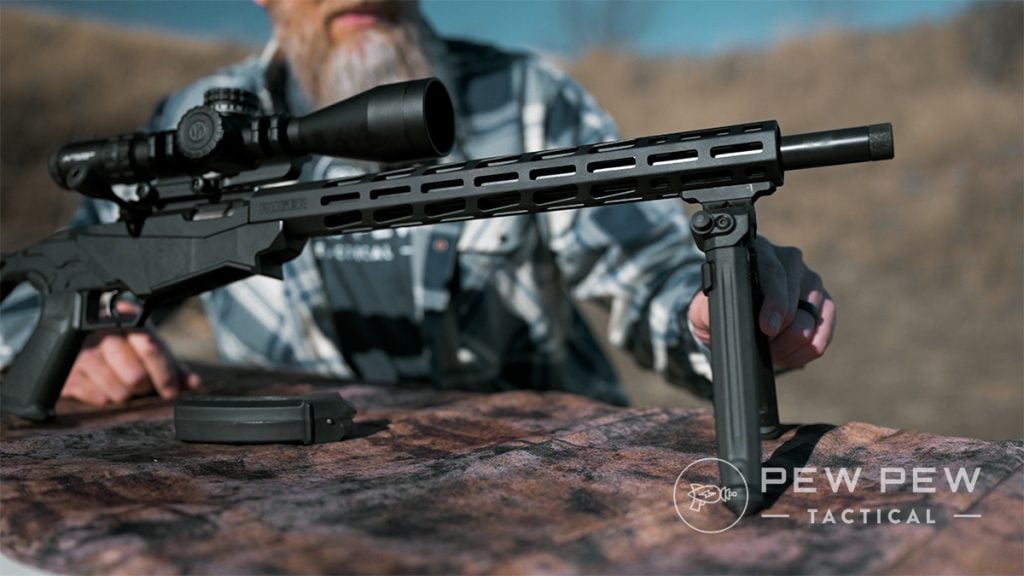
I’ve gone through several bipods, from the cheap to the “guess I’ll just skip eating this month,” so I like to think I have a pretty good idea of what to look for in a bipod, particularly one for an AR-15.
What makes a good AR-15 bipod?
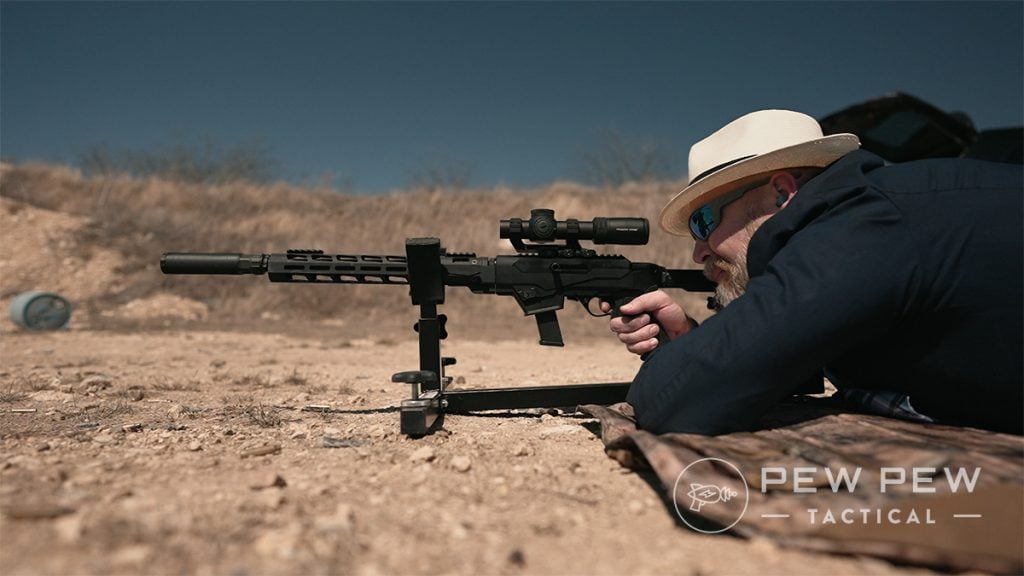
Well, for me, an AR bipod and a bipod for a bolt gun are pretty similar, but there are a few considerations for an AR bipod that make certain ones slightly better than others.
Let’s talk about what makes a good AR-15 bipod and what bipods you should be looking at if you’re interested in shooting with one.
Table of Contents
THE QUICK LIST
Why a Bipod in the First Place?
Shooting off bags or with a ransom rest is great and all, but good luck hauling those around if you’re hunting, participating in action shooting sports, or, worse, actual combat.
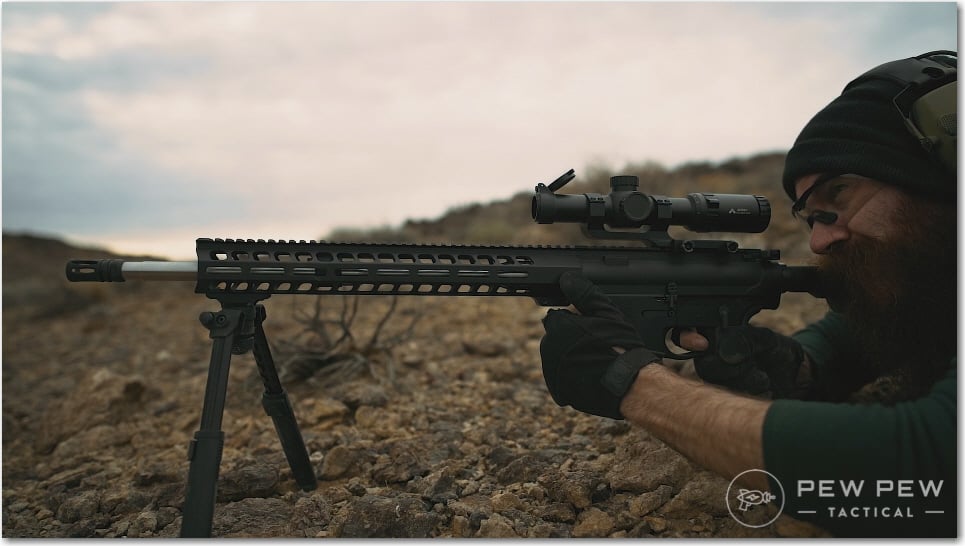
A bipod, when appropriately used, gives you a lot more stability than trying to shoot free-hand, and it attaches directly to your rifle, so you don’t have anything else to lug around — though it does add some weight to the front end.
What Makes a Good Bipod?
Let’s talk about some of the considerations when choosing a bipod for your AR-15.
Find Something that Matches Your Caliber
Like a lot of things, the best bipod for you depends on your application. If you’re shooting a big .50 cal, you’re going to need something extremely robust and sturdy.
If you’re shooting a lightweight .22 target rifle, you still need something that will give you a stable shooting platform, but you can get by with something a little less robust.
Most AR-15s are fairly light in the recoil department, and you’re likely to be moving around with it unless you’re just doing some target shooting at the range, so you are best with something lighter if you can get it.
As with most things, you get what you pay for, so if you think you can get by with a $50 airsoft bipod on your expensive precision rifle, you are sadly mistaken.
This segues nicely into the next big consideration…
Durability of the Bipod
Your bipod is going to undergo a lot of stress between the recoil and supporting the forward load you put on it to control said recoil.
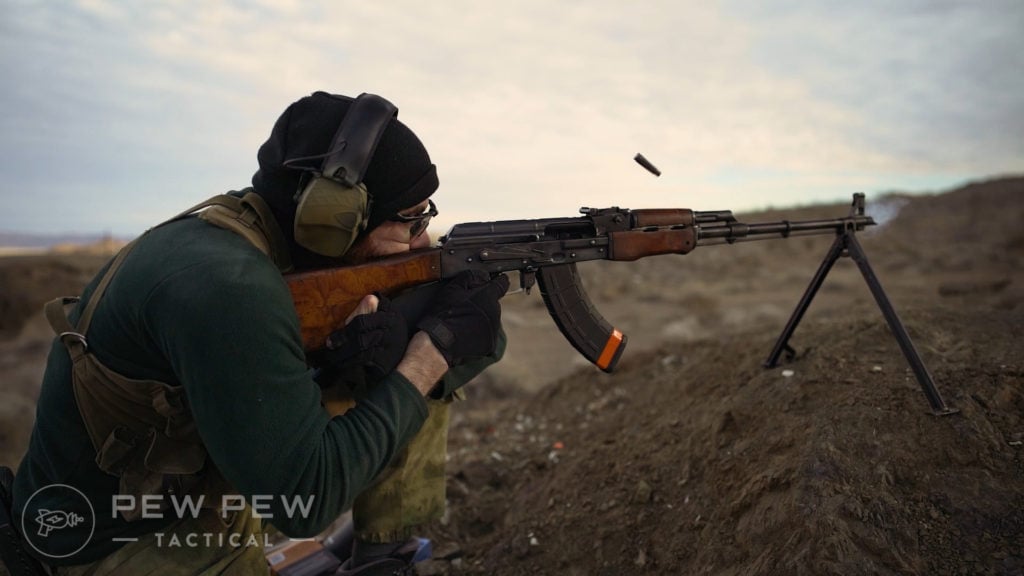
Because of these stresses, we want a bipod that is going to stand up to repeated use and abuse. Now, if you’re looking for a rifle you shoot twice a year, you can skimp a little here. If you’re looking to hunt or compete with your bipod or plan on target shooting a lot, buy once, cry once.
Go with a nicer one. It’ll save you money in the long run when your cheapo knockoff doesn’t lock in place anymore.
Height of the Bipod
Height is another thing you need to choose based on your specific circumstances.
For one thing, the bipod needs to be able to reach a height that is comfortable and appropriate for the shooter. It’s absolutely possible for a bipod to be too low.
Most bipods have legs that adjust from 6 to 9 inches, which is a pretty standard height, but I personally like legs that go up to at least 15 inches to accommodate a broader range of shooting positions and angles.
Other Features
Some other little quality-of-life things are worth considering as well.
Bipod Feet
Are you mostly shooting on hard-packed dirt in the desert, or are you hunting over mostly soft-ish ground? Are you shooting off barricades and obstacles? Maybe you’re using the side of your deer stand or a tree limb most of the time.
There are specialized feet that excel on all these different terrain types and in these situations. I like a bipod with interchangeable feet so I can have whatever I need when I need it, but in general, I’d say go with a more aggressive foot than you think you’ll need.
Soft surfaces are stable surfaces, and hard-packed turf can cause your rifle to bounce more under recoil, which can make your follow-through and follow-up shots more difficult.

In general, your sights should stay on target through the recoil impulse, so if you find your crosshairs way off after a shot, there’s a chance your bipod isn’t gripping and is bouncing off the surface.
This is why we push forward to “load” the bipod, which is made easier with a more aggressive foot that grips the ground or other surfaces better than a smooth rubber one.
Notched Legs
This isn’t strictly necessary but notched or otherwise marked legs that let you get a really precise level are nice. These are also nice if you regularly shoot from the same bench and want to have a consistent height.
Pan and Tilt
A bipod that can pan left and right and tilt up and down is great for folks that may need to track a moving target, or otherwise have a large area they need to cover.
It’s not strictly necessary if you’re, for example, target shooting or even doing something like 3-Gun where you’re generally going to be shooting in one direction for safety purposes.
Attachment Method
Many bipods come ready to attach to the forward sling swivel on a bolt gun, which is something your AR probably doesn’t have, so may sure either you get one that works with your handguard, or you get an adapter that has a sling swivel for the other style.
Generally, a Picatinny mount with a QD lever is the way to go.
Best Rifle Bipods
Alright, with the criteria out of the way, let’s look at some recommendations. These are generally going to be for brands or particular lines rather than specific bipods because you’ll need to choose the one that meets your particular needs.
1. Harris Engineering Bipods
Harris bipods are perfect for those on a budget, especially since your AR isn’t going to put the stress on it that a larger caliber would.
I like the Harris 1A2-LM in particular because of its lightweight and easy-on-the-wallet price tag. If you’re looking to give this bipod thing a try, this is the perfect entry-level bipod in my mind.
They can regularly be found on sale in the $60 range, which is quite good for the quality and very good when you consider that some high-end bipods (that we’ll get to in a minute) can easily hit ten times that price.
2. Atlas Bipods
My preferred flavor of bipod comes from Atlas, and I will fill you in on why.
I’ve dragged mine through dirt, and mud, lost it off the side of a boat for about 15 minutes (no, it wasn’t my fault, yes I was furious), and generally abused it and never had a problem.
They are north of $200, but that’s actually pretty cheap compared to some of the really high-end bipods out there.
I’ve used this bipod on a .300 Win Mag rifle with no problems, so I can comfortably say it’s as bomb-proof as you can get at this price point, and it doesn’t bounce under heavy recoil.
It also has a really solid height adjustment and a wide variety of OEM and aftermarket feet you can easily swap out to suit your personal preference.
What’s your take on the Atlas? Rate it below!
3. GG&G Bipods
GG&G is another middle-of-the-road bipod option that is also good in this price range and is also made in the U.S., like Atlas bipods.
I include this one because I’ve heard such good things about it from other serious shooters.
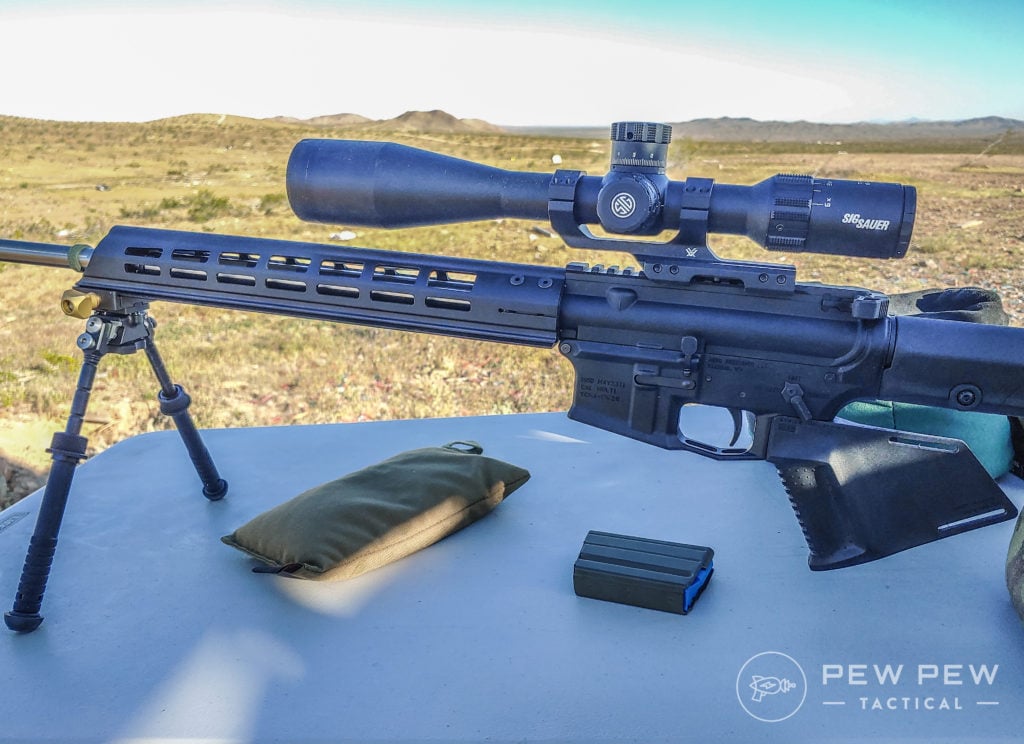
You can get a GG&G bipod for about the same price as a base model Atlas, but when you start looking at higher-end Atlas offerings, the price difference might come into play.
In general, I’d say go for either one, depending on which one is cheaper and how important some of that Atlas line’s extra features are.
4. Elite Iron Rev Lution Bipod
Are you one of those “overkill is underrated” types? Me too.
If you want a bomb-proof bipod that you can also use as a club once you run out of ammo, the Elite Iron Rev Lution is where you should look.
This is the bipod I’d buy if I needed just one to move from rifle to rifle with the confidence that it could handle anything from a .22 LR to .408 (no that’s not a typo).
Its extended legs can rotate 360 degrees within the mount, and thus you can get away with all manner of angles and configurations.
All-steel construction features no exposed springs, and an easy-locking will let you have a rock-steady shooting platform, even at weird angles.
The only downsides are the price ($600+) and the weight at 34 ounces, but if you’re looking for one bipod to do it all, this is the one.
5. MDT CKYE-POD Gen 2 Bipod
The MDT CKYE-POD might be the premier bipod on the market. I can’t think of one better than the CKYE-POD if you are a professional shooter who needs a top-tier match bipod.
MDT designed the bipod to be easily adjustable with a single hand to allow positive control over the rifle as the bipod is deployed and put into action.
Adjusting the CKYE-POD’s leg height can be done with a single hand without much challenge. It’s quick, simple, and allows for broad adjustments.
On the standard model, adjustments range from 4.5 inches to fairly tall 15.5 inches. The height of the legs can also be adjusted independently of each other.
With 170 degrees of cant and 360 degrees of pan, your ability to move the rifle from target to target is unparalleled. There is also a pan-free version if you don’t care for the pan feature.
There is a separate tension adjustment for both pan and cant, and you can also swap the feet to best fit your shooting environment.
It comes in either left or right-handed designs, so even you wrong-handers can feel at home.
On top of all the fancy features, the CKYE-POD also featured a rugged design. It is made to last and refined with a tumble deburring process for smooth and easy operation.
6. Spartan Precision Equipment Valhalla Rifle Bipod
This lightweight, high-tech bipod is designed with input for Norwegian special operations, earning it the Valhalla namesake.
It uses a rather ingenious and unique attachment system. You attach an included adapter, be it M-LOK or Picatinny, and then attach the bipod to the adapter.
This allows you to quickly remove and attach the bipod on the fly. Bipods are great when you need them, but when you don’t, they are boat anchors that unbalance your rifle.
After you remove the bipod, you are left with an adapter that weighs a few ounces at most, making it much easier to handle or store your rifle.
The Valhalla features 7075 construction with a hard-anodized finish. The feet feature tungsten carbide tips with textured synthetic slip-on ‘boots’ to accommodate multiple environments.
Spartan Precision designed the legs to be easily adjustable with a single hand, and they are spring-loaded for rapid deployment.
It’s a bipod designed for hunting, competition, and tactical shooting. It’s one of the most modular bipod platforms on the planet, and if you prefer that flexibility, this is the route to take.
7. Magpul Bipod
Magpul does a great job of delivering a product, and they did so again with their newly released bipods. These are half polymer and half Aluminum, meaning they are robust and lightweight.
Available in M-LOK, A.R.M.S. 17S, and Picatinny rail mounting options and in both Black and FDE colors — it’s fairly easy to find the right one for your rifle and tastes.
Adjustable between 6.3 and 10.3 inches gives most people the height options they need without adding undue weight to the system.
Weighing in at only 11 ounces also puts it at a fairly low weight comparatively, making it easy to hike and move with.
The feet aren’t our favorite we’ve used, but they do a good enough job on most surfaces and are durable even on ragged rock.
Plus, it’s got a nice clean look to it.
Final Thoughts
There are a lot of great AR-15 bipod options out there. Hopefully, this has given you some ideas about what makes a good bipod, how to choose, and some good places to start your search.
What do you think of these bipods? Do you have a favorite? Be sure to let us know in the comments below! Going to be shooting prone often? Check out our article on the 5 Best Shooting Mats!








































